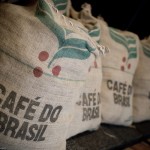
Coffee Bean Locations from Around the World
Looking for the best information about coffee beans from around the world?
You’ve come to the right place!
In this article, we look into some of the most popular coffee bean locations. Be sure to follow the link to more in depth information about each location. We found some amazing fact treats that are fun to consume for each location.
There’s no denying it…
Coffee is among the five highest traded commodities in the world, second only to oil and is grown in many coffee bean locations around the world.
With so much affection given to the drink, it is hardly surprising that the unpretentious little brown beans can be traced to over seventy countries of origin where coffee production creates major exports.
Brazil: A Rise in Specialty Coffees
>>> Click to see Brazilian Coffee Bean ratings, reviews and prices on Amazon <<<
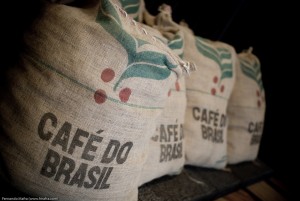
“proudly brazilian” by Fernando Mafra, flickr (CC BY-SA 2.0)
Brazil is one of the largest producing coffee bean locations in the world.
Unfortunately, the sheer amount exported coffee caused the quality of Brazilian coffee to suffer for many years.
What’s the story?
It was believed for a long time that Brazilian coffee was only good for coffee blending.
As a matter of fact, manufacturers take a specialty bean from another country and cut them with the substandard Brazilian beans.
Recently, the emphasis on mass production is down. Brazil is seeing a reemergence of specialty coffee such as Bourbon, Typica, Caturra, and Mundo Novo varieties.
But, that’s not all…
We dig a little deeper into Brazilian coffee beans, where farmers in Brazil grow, and the characteristics of Brazilian coffee beans in this article.
Colombia: A Cup for the Senses
>>> Click to see Colombian Coffee Bean ratings, reviews and prices on Amazon <<<
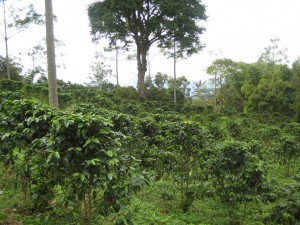
“Coffee farm in Colombia” U. S. Fish and Wildlife Service, flickr (CC BY 2.0)
Colombian coffee is 100 % pure Arabica coffee grown in the coffee growing region of Colombia.
A cup of coffee from Colombia is very robust, highly acidic with a full sensory profile.
The standards to which Colombian coffee farmers hold themselves are why this coffee is a favorite all over the world as the coffee of choice.
Unfortunately, like many commodities, good coffee is in high demand.
Why it works…
Colombia prides itself on sustainability as much as quality.
This will create a drop in the market for Colombian beans as buyers will look to obtain beans from other regions to fill the gap.
The Colombian Coffee Federation is on top of it and is trying to find a solution to that and other stressors faced by coffee farms in Colombia such as the fact that Colombia is sitting right in the path of El Nino and La Nina.
Those giant forces of nature are fond of Colombian coffee too it seems.
To find out more about Colombian coffee bean plantations and why they are some of the best coffee beans in the world, we uncover another layer in this article.
Costa Rica: The Sustainability Crisis
>>> Click to see Costa Rican Coffee Bean ratings, reviews and prices on Amazon <<<
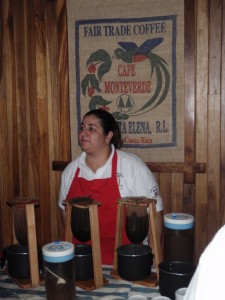
“Yum – Organic coffee” by Kate Webster, flickr (CC BY 2.0)
Coffee has traditionally been the cash crop of Costa Rica for its 52,000 growers.
For most of its history, Costa Rican coffee production has been a sustainable system, using techniques like growing the valuable bushes under the canopy of huge shade trees.
There’s no denying it…
These coffee laden forests were home to great biodiversity.
They were habitats for land dwelling animals and sanctuaries for vast bird populations.
Progress did as progress does and muscled its way into the fabric of Costa Rican coffee culture.
Now, instead of farming under bio-diverse canopies, coffee farmers grow a single crop in the full sun.
Production is up and that makes everyone happy. Everyone that is, except the environmentalists, who worry about the carbon footprint that mass production creates.
Authorities are trying to find a solution which will allow for a greater yield of beans and stabilize the out of control carbon footprint of the current production methods.
Read this related article about Costa Rican coffee beans for a deep dive into this region.
Ethiopia: Coffee Bean Locations Matter Here
>>> Click to see Ethiopian Coffee Bean ratings, reviews and prices on Amazon <<<
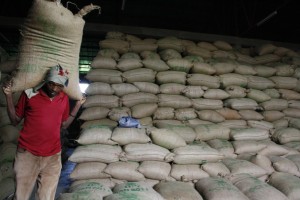
“Thousands of bean bags” by DFID – UK Department for International Development, Flickr (CC BY 2.0)
Ethiopia is home to both the best coffee in the world and the worst.
The worst is “Jimma 5” which is known simply by its terrible flavor.
Why is this?
Jimma, a town in an impoverished area of Ethiopia, brings to market beans that are nutrient deprived, under ripe, over ripe, and the worst of all, beans that are fermented for too long.
Just one of these over fermented beans could ruin a cup.
Here’s the interesting part…
Right on the other side of the river from Jimma, where the poorest coffee farms slept, you can find the “Cinderella” of the coffee bean menu.
The local farmers formed a cooperative named Duromina and bought some updated equipment to complement their harvest and preparation which had not changed in a thousand years.
In 2010, when big coffee companies came in search of the world’s next coffee superstar. They found Duromina and yes, they were impressed.
It is now hailed by many discerning coffee connoisseurs as one of the best coffee bean locations in the world.
But, that’s not all!
Learn more about this coffee bean origin in this comprehensive article about Ethiopian coffee beans.
Guatemala: On Coffee Snobbery
>>> Click to see Guatemalan Coffee Bean ratings, reviews and prices on Amazon <<<

“Clean Coffee” by David Amsler, flickr (CC BY 2.0)
One of the big names in gourmet coffee is Antigua.
Antigua, as coffee bean locations go, is a mountainous region of Guatemala where coffee snobbery is on full display.
Why do they think they can get away with this?
Genuine Antigua coffee has a lingering aroma and robust flavor.
The value of coffee trade in Antigua is more than a smashing cup of coffee.
It’s in the improvement to the lives of the people in the region.
Because of the fair trade of Antiguan coffee, the local Guatemalan residents enjoy education, healthcare, and workshops to support the advancement of the women of Guatemala as home based businesswomen.
We dig a lot deeper into Guatemalan coffee brands in this article.
Hawaii: Sun, surf… and Kona coffee
>>> Click to see Hawiian Kona Coffee Bean ratings, reviews and prices on Amazon <<<
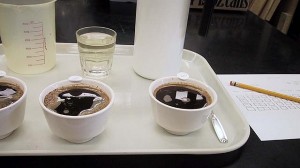
“Kona Coffee Cupping” by Michael Allen Smith, flickr (CC BY-SA 2.0)
It’s not hard to imagine why the Aloha state is a favorite vacation destination on this list of coffee bean locations.
Each year, the Hawaii Coffee Association holds a cupping competition during the annual conference and trade show.
But, that’s not all…
The Hawaii islands are home to hundreds of coffee plantations and have produced coffee for the world to enjoy for 200 years.
But if you are looking for authentic Kona coffee, you have only to zip on over to the Kona district of western Hawaii to find it.
Kona is a beautiful and unique tropical area with soil made rich from the volcano; warm, sunny mornings to ripen the fruits and soft misty afternoons that produce just the right kind of ecosystem for coffee to thrive in.
Kona coffee is produced under strict guidelines that ensure quality. With over 600 Plantations, Kona has the Kona market cornered.
Want more details on exactly which beautiful Hawaiian islands grow the best coffee beans in this Hawaiian Coffee Brands article.
India: Where Monkey Business is Good Business
>>> Click to see Indian Coffee Bean ratings, reviews and prices on Amazon <<<
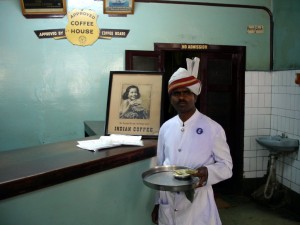
“luwak coffee” by inna dee, flickr (CC BY 2.0)
There are legends, folk lore and fantasy surrounding Indian coffee bean locations.
Coffee has had a place in Indian tradition since as early as 1600.
The actual coffee, on the other hand wasn’t anything to write home about.
It was perfectly good coffee; it just was not anything special, until recent years.
What changed?
Relaxed government control and higher standards of production have done wonders for the ancient beans.
Now Coffee from India can claim its rightful place in gourmet circles.
Right on top of the list of fanciful Indian Boutique style Coffee is the trendy “monkey parchment” which refers to beans that have been reclaimed after they were chewed and partially digested by the monkeys that terrorize the plantations.
When farmers like Mammen, couldn’t stop the local monkeys from eating their crops, they turned monkey business into good business.
Indonesia: Excellence in Diversity
>>> Click to see Indonesian Coffee Bean ratings, reviews and prices on Amazon <<<
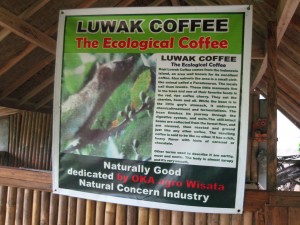
“Bali, Indonesia” by Rudy Herman, flickr (CC BY 2.0)
“Excellence in Diversity” is the credo of the Specialty Coffee Association of Indonesia (SCAI).
The names Java and Sumatra bring to mind a coffee that is full flavored and exotic.
Lesser known coffee bean locations of Papua are making an appearance on the coffee scene and you can’t forget such specialties as the famous Kopi Luwak.
This coffee is made from beans reclaimed from the excrement of cat like creatures that the locals call Luwaks and is arguably the most expensive coffee in the world.
The worst part?
Unfortunately, Indonesian farmers are trying to profit on the Luwak.
They’ve started producing “Luwak” coffee using caged animals.
Not only is this method cruel to the Luwak, it defeats the reason these beans were great. The reason being that the Luwak only eats the sweetest and the BEST coffee beans.
Kenya: The Standard for Arabica
>>> Click to see Kenyan Coffee Bean ratings, reviews and prices on Amazon <<<
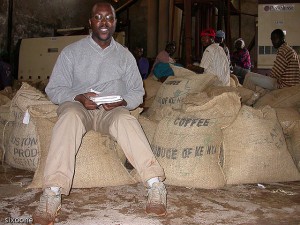
“tea-dscn4892” by David, flickr (CC BY 2.0)
Kenyan Arabica sets the standard for Arabica coffee bean locations.
Why is that?
In Kenya, the government highly regulates coffee production.
Small scale farmers in Kenya own their own land and form cooperatives.
The acidic soil and ideal weather in Kenya creates the perfect climate for growing coffee.
Kenyan Arabica is mild and a favorite for blending.
[break]
Mexico: World Leader in Organic Coffee
>>> Click to see Mexican Coffee Bean ratings, reviews and prices on Amazon <<<
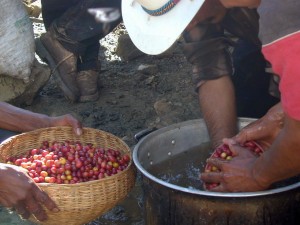
“sorting the coffee cherries” by Joe Driscoll, flickr (CC BY-SA 2.0))
There have been coffee plantations in Mexico for 200 years.
But, due to poor management, corruption and political unrest, Mexican coffee did not become a noticeable player in the coffee industry until the 1970’s.
What is happening here?
Once established Mexican coffee took a major hit from the competitiveness of Brazilian coffee production.
It wasn’t until the 90’s when Mexican co-ops took the lead in organic coffee production.
Where is Mexican coffee bean production now?
Mexico produces a staggering 60% of the world’s organic coffees.
With the wind blowing the way of organic and fair trade products, the Mexican coffee revival is poised to be a Mexican coffee powerhouse.
Find out more about Mexican coffee beans and why Mexico is a leader in coffee bean exports in this Mexican Coffee Brands article.
Puerto Rico: Dwindling Coffee Production
>>> Click to see Puerto Rican Coffee Bean ratings, reviews and prices on Amazon <<<
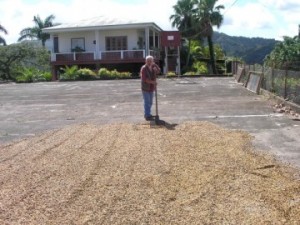
“Drying Coffee in Puerto Rico” by Michael Allen Smith, flickr (CC BY-SA 2.0))
Puerto Rico felt the Mexican coffee revival right in the wallet.
According to an article in the Huffington Post, coffee production in Puerto Rico has dropped significantly in recent years.
Recent hurricane destruction hasn’t helped.
Bottom line?
There is some debate as to why production has dropped.
Two things stands out. Both small farms and large plantations are being abandoned and there is a shortage of farm workers to work the fields.
It isn’t that there are no unemployed people in Puerto Rico.
There are still plenty of poor areas where work is scarce.
Is it the competition, poor management or is there another reason why Puerto Rican coffee is dwindling? Check out this investigation of Puerto Rican coffee Puerto Rican coffee to understand more.
Vietnam
>>> Click to see Vietnamese Coffee Bean ratings, reviews and prices on Amazon <<<

“FASHION : BOBBI VIE” by Bobby Vie, flickr (CC BY 2.0)
Vietnamese do not traditionally drink coffee.
Coffee was only introduced in Vietnam within the past century.
It is mainly grown for export.
Unlike many other coffee giants, the Vietnamese don’t grown Arabica.
They grow the bitterer, highly caffeinated Robusta strain of coffee beans.
We dig deeper into this Robusta culture of coffee in this Vietnamese Coffee Brands article.
[break]
[break]
Yemen: Ahhhh….. Mocha!
>>> Click to see Yemani Coffee ratings, reviews and prices on Amazon <<<
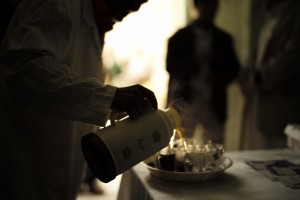
“Fresh coffee” by Julien Harneis, flickr (CC BY-SA 2.0))
All Arabic coffee originated in Yemen.
Yemen is the birthplace of the delightful Mocha or Mohka coffee.
The first passage of Arabic coffee by Portuguese traders is recorded from the 16th century.
The coffee trade in Yemen flourished for hundreds of years until the caffeine laden beans established themselves in other territories around the world.
With a rising demand for pure strains of coffee by coffee aficionados, Yemen is poised to have a great revival as one of the top coffee bean locations, especially if they play up their traditional methods of production and keep their prices premium to discourage competition.
We think you might also like this related article about Yemen Coffee Beans where we uncover some of the secrets of Arabica coffee.
Sorry, the comment form is closed at this time.